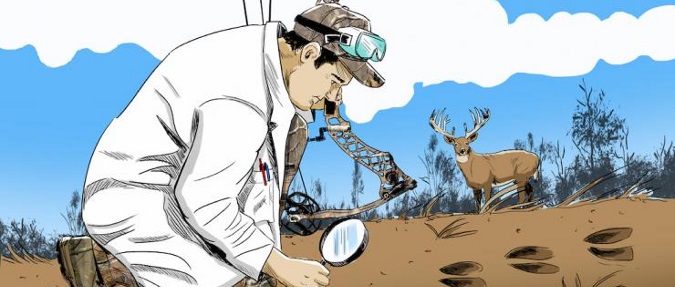
Throughout the years, most of us have had to rely on our own experiences or reading about the experiences of others to improve our hunting success. The problem is we sometimes draw the wrong conclusions from our past experiences, and misinformation from others can be passed down for generations as fact. So where is a deer hunter to turn for reliable information? Science, of course.
The invention of GPS-transmitter technology has given researchers amazing insight into the daily habits of white-tailed deer, particularly mature white-tailed bucks. Scientific papers aren’t the first place an avid deer hunter would think to look for deer hunting advice, but they can certainly provide valuable hunting information. You just have to get past the statistical jargon and scientific-speak.
Let’s take a look at some of the latest deer research and what it has taught us about the science of killing big bucks.
Home Ranges
One piece of the whitetail puzzle that has been studied in detail thanks to the availability of GPS technology has been home range size and use. The one square mile figure that is often quoted in popular hunting articles may be close to the average size of a buck’s home range, but it really doesn’t tell the full story. What research has revealed is the individuality of whitetail bucks. Home ranges vary greatly between various types of habitat and even between individual bucks in the same quality habitat.
VISIT THE REALTREE STORE HERE – http://store.realtree.com/
Clint McCoy is a deer biologist with the Ohio Division of Wildlife. While getting his master’s degree and Ph.D. from Auburn University, Clint conducted research tracking the movements and home ranges of 37 bucks at the 6,400-acre Brosnan Forest in South Carolina. His research showed an average home range size of 350 acres, but it varied from as small as 60 acres up to 754 acres. Interestingly enough, the two smallest and two largest home ranges in that study belonged to yearling bucks.
Researchers from Penn State University have been using GPS collars to monitor deer in multiple study areas since 2013. They have put collars on more than 100 deer to date. The study — known as the Deer-Forest Study — found home range sizes varied seasonally, growing from an average of approximately 400 acres in September to nearly 2,000 acres during the rut. Interestingly, home range sizes dropped to approximately 100 acres during Pennsylvania’s rifle season.
GPS-based research has taught us that once established, bucks rarely abandon their home ranges. We have also learned that within their home range, bucks have a “core area” which is defined as the area where a deer spends at least 50 percent of its time. These core areas are often only 5 to 15 percent of the buck’s home range, which is typically less than 100 acres.
The good news for deer hunters is you don’t have to own or hunt hundreds of acres to have a mature buck spend the majority of his time on the property. Even owners of small tracts of land can be successful by providing all the buck’s daily needs, or in some cases, just a key piece of habitat that is lacking from surrounding properties.
CONTINUE READING HERE – http://www.realtree.com/deer-hunting/articles/the-science-of-killing-big-bucks

